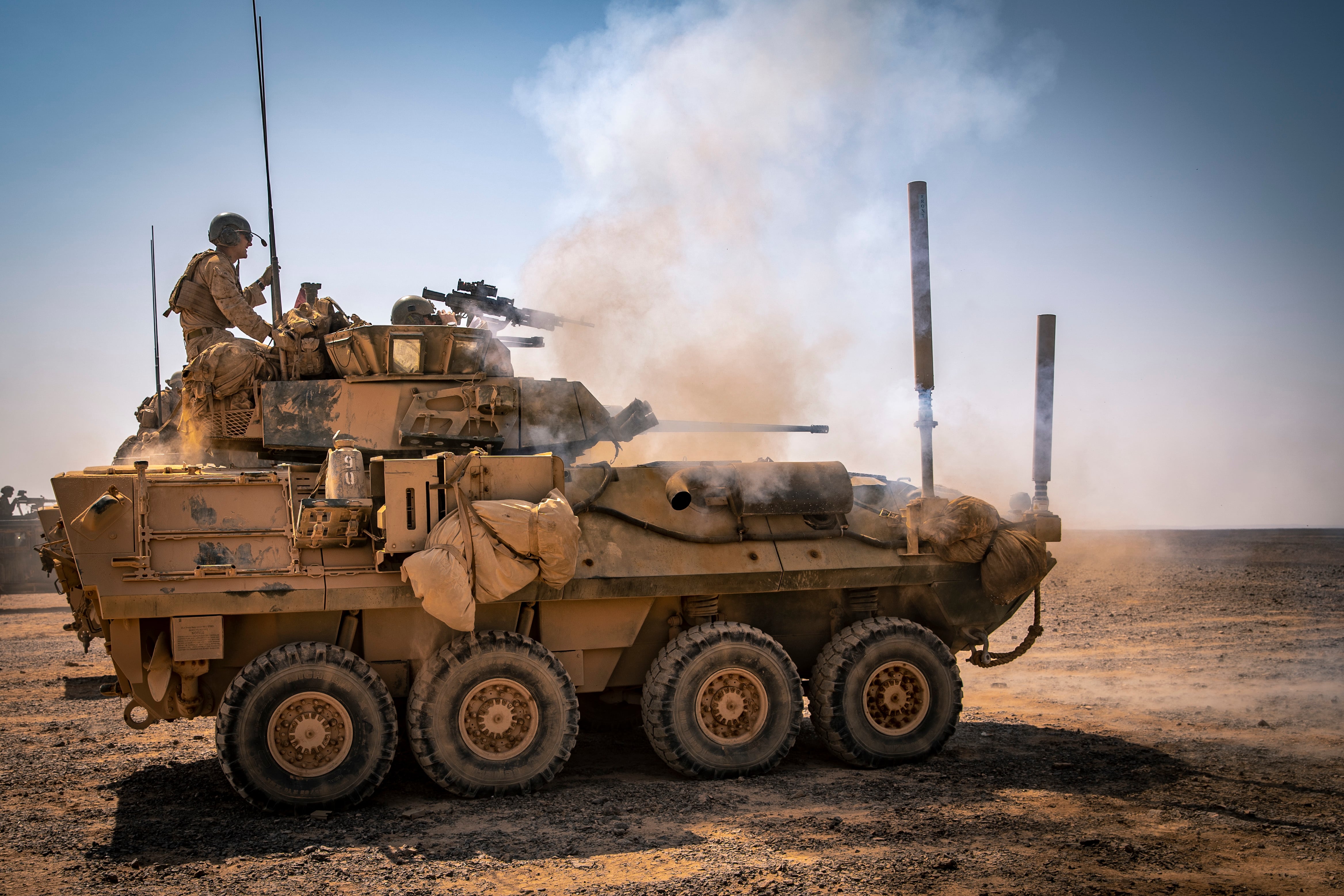The Marine Corps is getting smaller, that’s no secret.
But a recently released think tank report diving into the Corps’ budget shows exactly which areas will be shrinking and how that might stretch demands on the force.
The Center for Strategic and International Studies published its “U.S. Military Forces in FY 2022: Marine Corps” on Wednesday.
The report reflects much of what has been acknowledged publicly since the start of Commandant Gen. David Berger’s tenure in 2019. The Corps has to shift to fight alongside the Navy to be relevant in a great power competition with the Russian and Chinese military, but mostly the Chinese.
RELATED

That has meant shedding assets and personnel such as tanks and military police while beefing up fires from conventional artillery to longer-range rockets. It’s also meant an overhaul of training for the core of the Corps: the infantry.
But what’s gotten less attention is Berger’s aims to streamline aviation, taking a hard look at F-35 acquisition and finally getting the service into the drone game at scale. And that means more drone pilots and drones to fight at longer ranges.
And those up-and-coming specially trained and experienced infantry? By Marine veteran and CSIS report author Mark Cancian’s estimation, they’re going to be spread thin, which means some of the bread-and-butter work that the Marines have used as a calling card since the Cold War ended ― the Marine Expeditionary Units ― may suffer.
Cancian notes that flat budget top lines heading into 2022 and beyond have forced Berger to pick equipment instead of people, or at least numbers of people.
The Corps is on a path to shrink the force down to 172,000, which is the level it was before 9/11. In 2020, the Corps was slightly more than 180,000 active duty Marines and nearly 40,000 in the Marine Corps Reserve.
Some of those cuts will come wholesale in unit deactivations. They will have only 22 infantry battalions versus 24 now on paper. The plan is to fully staff those battalions, though ― a kind of unicorn idea for many who’ve served in infantry units over their careers.
But the grunts aren’t paying all the dues. The top Marine is reviewing up to 15 percent personnel cuts in headquarters and supporting establishments, Cancian wrote.
Berger hasn’t hidden his hard look at aviation, though details have been sparse.
“I am not convinced that we have a clear understanding yet of F-35 capacity requirements for the future force,” Cancian quotes from Berger’s 2020 posture statement remarks to Congress.
Eventually, the general wants half of his aviation fleet unmanned, he said in his “Unmanned Campaign Framework,” published in March.
For now, he has also detailed in his Force Design 2030 report that he wants six active component unmanned vehicle squadrons for the future force.
That’s double the number currently available.
But Marines piloting those existing drones have limited options.
Cancian points out that as of now, the Corps only has two armed drones as compared to the Air Forces’ 351 armed drones.
The Corps did shift away from its large-scale plan to build a drone that would do everything: the Marine Air-Ground Task Force Unmanned Aerial System Expeditionary, or MUX.
The high price tag had some in Congress balking at the expense. Instead, the Corps has shifted to the MQ-9 Reaper drone as its entry point to higher-level drone work.
The MQ-9 plan, thus far, hasn’t been fully ironed out, Cancian pointes to planning documents that suggest a “loyal wingman” approach, similar to the Air Force’s method of using drones of that caliber.
The additional three squadrons would be stood up by 2026, according to Marine Corps planning documents.
What might affect more Marines and what they do when deployed is the creation of the Marine littoral regiments.
The Marine littoral regiment is the Corps’ current answer for how to be fighting at scale with China in the U.S. Indo-Pacific Command.
There are three planned in total, they’ll be heavy on fires and lighter on infantry but will still need grunts to do the on-the-ground work.
That will draw forces from the MEUs, Cancian argues.
And the Marine littoral regiments can’t really be used the way MEUs are today, he writes.
“The full MLR is too large for routine long-term deployments, deploying just the combat team would leave the rest of the unit incomplete, and deploying a proportional slice would not produce the wide variety of capabilities that forward-deployed Marine units have traditionally had,” Cancian writes. “Instead, the Marine Corps may move to periodic but limited-duration deployments for exercises and engagements with allies and partners.”
That’s especially true if the Corps wants to keep running seven MEUs across the globe with all associated personnel and gear, Cancian wrote.
An option is a tool that the Corps has used increasingly in the past decade: the Special Purpose Marine Air-Ground Task Force.
As one of the few deployable units smaller than a MEU, it can be designed for unique tasks, but that size difference comes “at the cost of logistics and firepower,” Cancian notes.
Todd South has written about crime, courts, government and the military for multiple publications since 2004 and was named a 2014 Pulitzer finalist for a co-written project on witness intimidation. Todd is a Marine veteran of the Iraq War.





